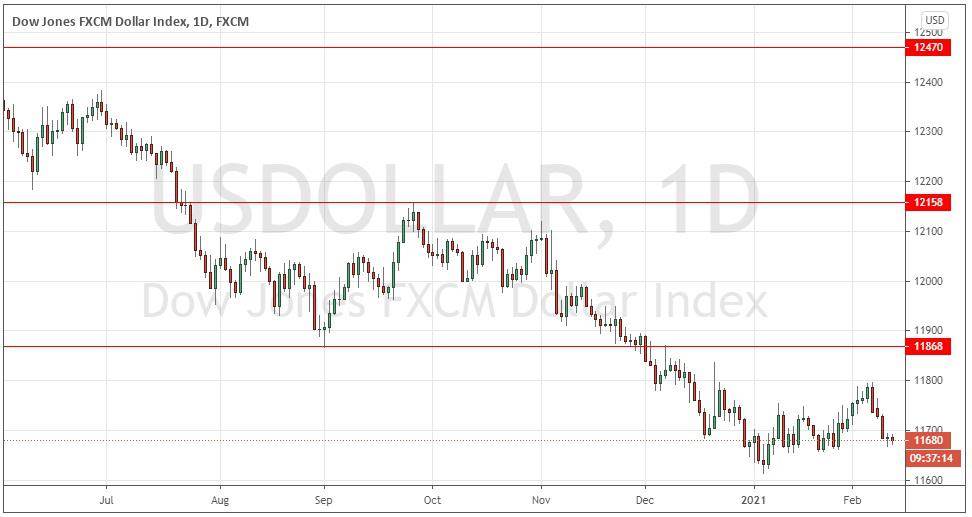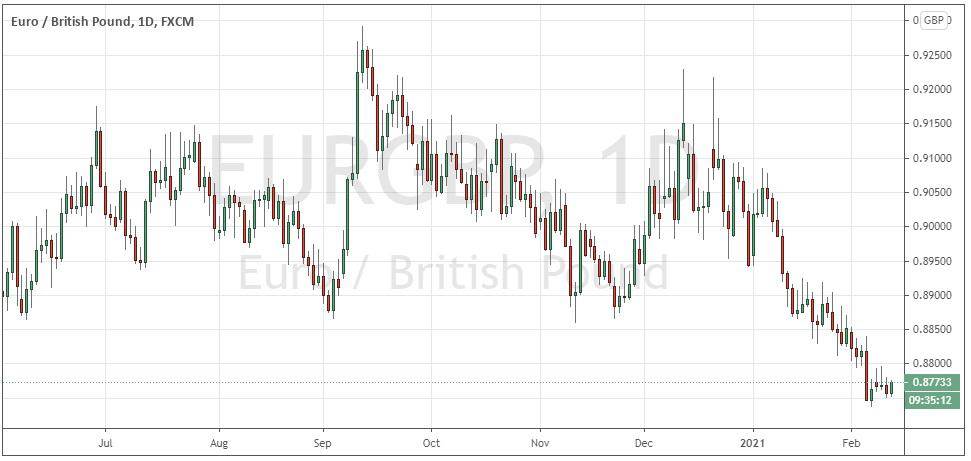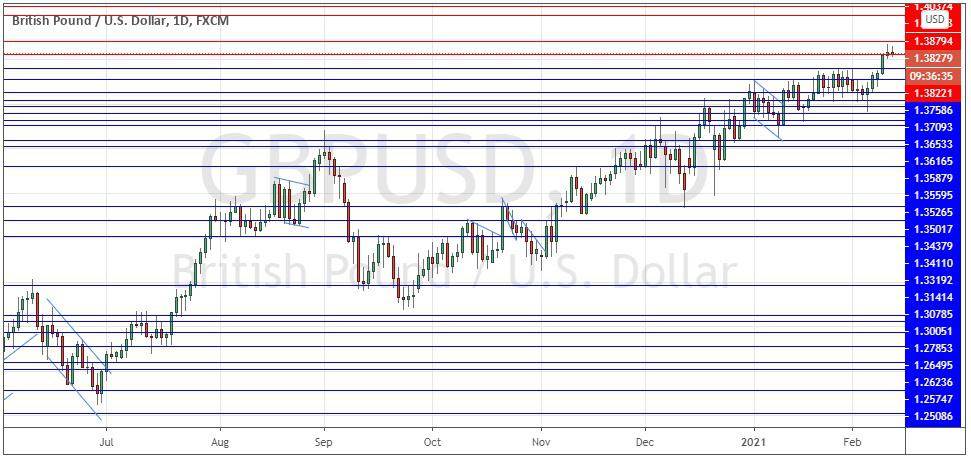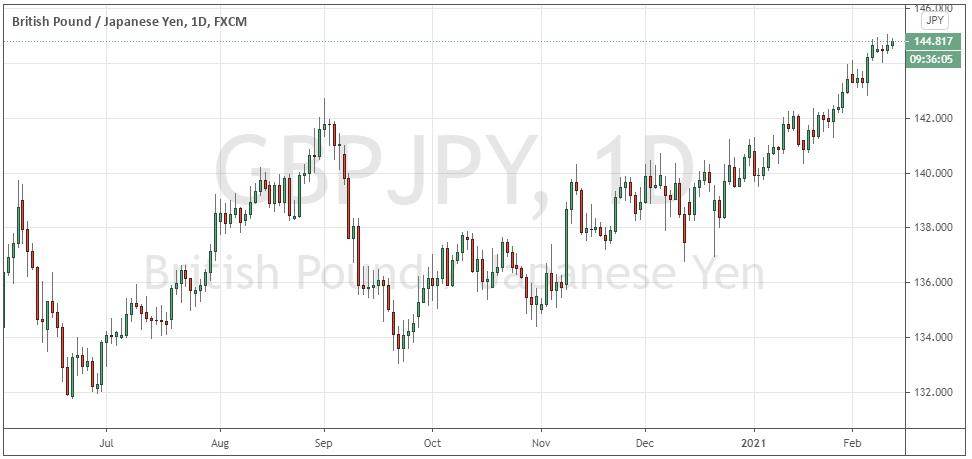British Pound Technical Analysis
It is usually a good idea to begin any wide-ranging technical analysis in the Forex market with the U.S. dollar, as trading in the greenback comprises more than 80% of global Forex volume. The daily chart of the U.S. Dollar Index below shows that although there has clearly been a long-term downwards trend in the dollar, the price has been consolidating since the start of 2021 a few weeks ago.

The existence of a long-term downwards trend in the dollar should provide a boost to every other major currency, obviously including the British pound. The U.K.’s major trading partners are the European Union and the U.S.A., so it is helpful to begin to zoom in by looking at long-term daily price charts of the EUR/GBP currency cross and the GBP/USD currency pair.

It can be seen in the price chart above that the British pound has been gaining against the euro quite steadily over the past six weeks or so. Turning to the GBP/USD price chart below, we can see that the pound has been continuing to gain, reaching a new multi-year high just the day before yesterday – even as the U.S. Dollar Index has firmed up over the past several weeks:

Finally, turning to the pound’s performance against another very important currency, the Japanese yen, we see that its rise is technically perhaps even more solid against the yen than against the dollar:

This adds up to convincing technical evidence that the British pound is showing a lot of long-term strength – in fact, when a currency is gaining over the long-term against all the majors, it is likely to be the strongest major currency, and that is the case with the British pound today. It could be argued that the Australian dollar is a rival for first position, and it is true that the Aussie has risen more against a basket of currencies since the coronavirus crash of Q1 2020 than any other currency.
British Pound Fundamental Analysis
Fundamental analysis is always challenging, because it is tempting to try to explain trends in the market after they have occurred by finding some fundamental justification for it. Some analysts have lately been pointing to the fact that the U.K. is vaccinating its population against coronavirus at a faster rate than almost any other country in the world. The Financial Times vaccine tracker shows the U.K. in 8th place in terms of vaccines given per head of population. The U.K. will be able to fully open its economy ahead of almost every other country, so the argument goes, and that is why the pound is rising. This is a plausible argument, but I have shown above that these trends began long before any coronavirus vaccine was approved for release (December 2020). Another factor could be that the U.K. was able to leave the E.U. with a deal at the end of 2020, but again, this did not become obvious until December 2020. However, it is true that the positive trend in the pound has become more pronounced during the past few weeks, and these factors have likely played a role.
A story told less often, but no less true, is that British economic growth and employment levels have strengthened over 2020, if you factor out the effect of the coronavirus shock. Although the anticipated GDP growth in 2021 is still considerably less than its decline in 2020, compared to other nations, it is relatively good.
Outlook for the British Pound
Technically, the outlook for the pound remains bullish. It cannot be otherwise when the currency is hitting long-term highs against all its major trading partners. Based upon historical data, the odds are in favor of a continuing rise over the short-term every time the GBP/USD currency pair closes at a new 50-day high.
The fundamental outlook is less clear, as always. The Bank of England is keeping interest rates extremely low and doing everything to maintain an unceasingly accommodative monetary policy, like almost every other central bank in the world. However, the bank recently used language suggesting it would not seek to pursue a negative interest rate policy, and that was a fundamental factor which certainly helped to boost the pound’s value.
The British pound is certainly a currency that Forex traders should have in focus today and over the near term.
